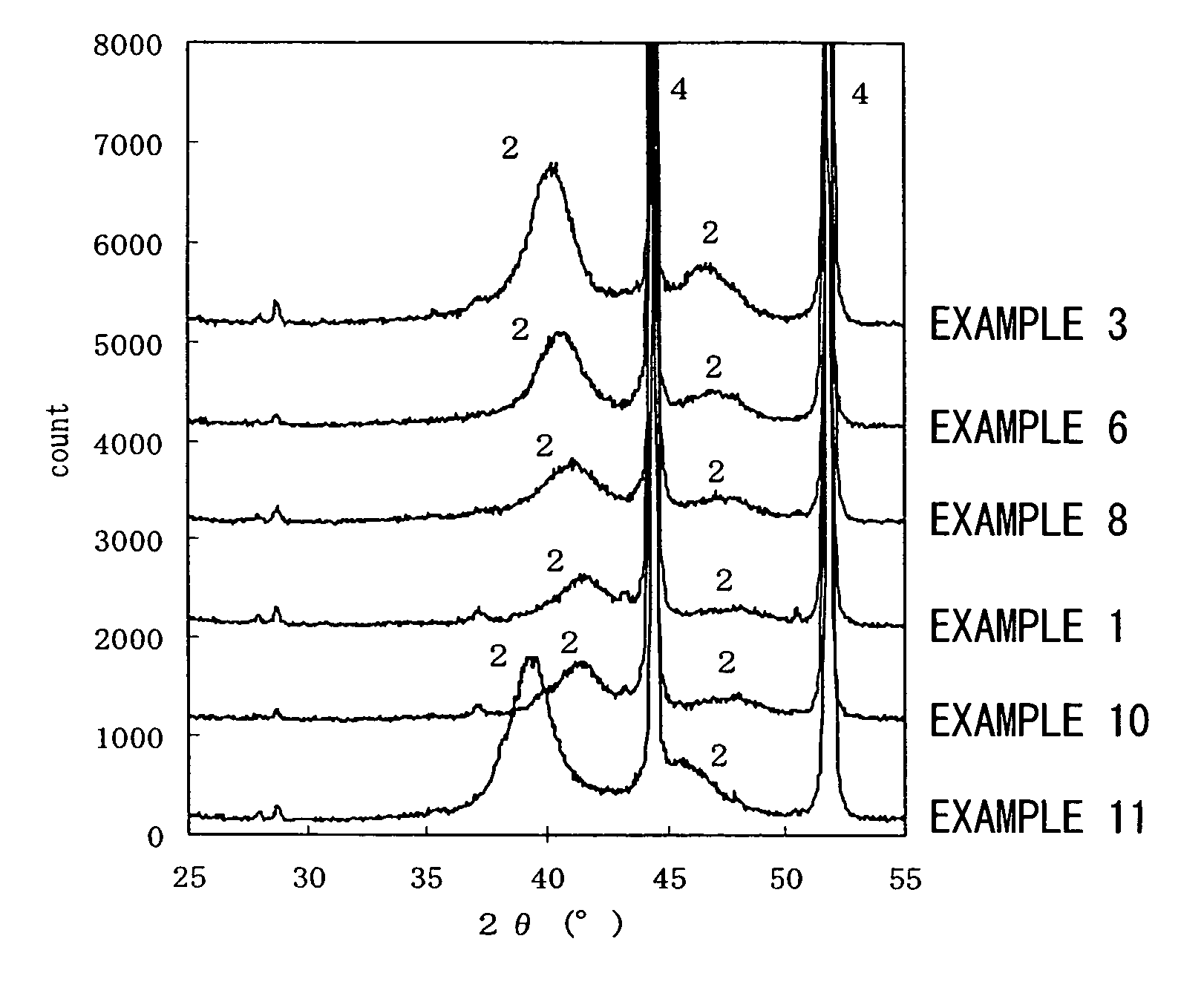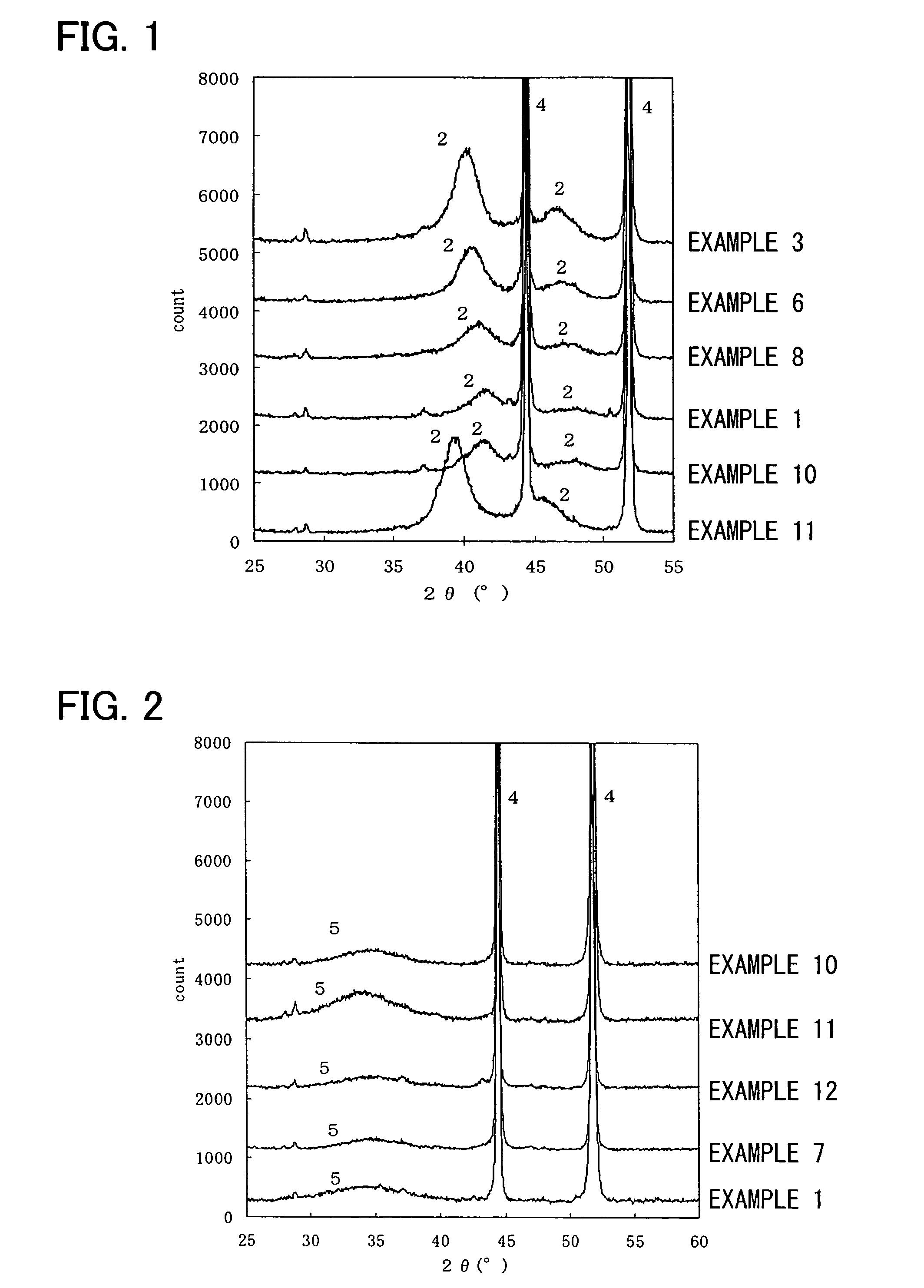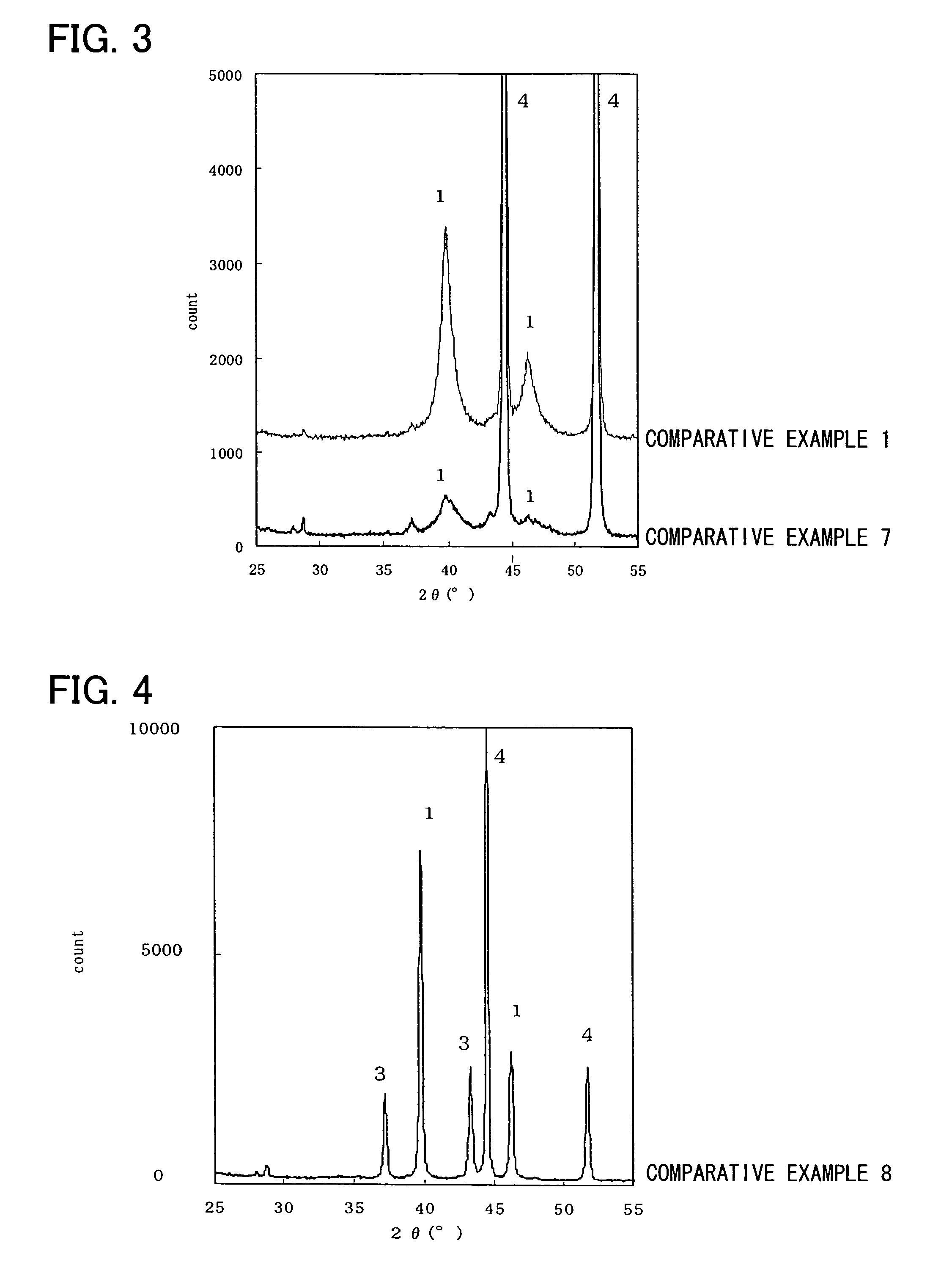Electrode for hydrogen generation, method for manufacturing the same and electrolysis method using the same
a hydrogen generation and electrolysis technology, applied in the direction of hydrogen, electrostatic separator, metal/metal-oxide/metal-hydroxide catalyst, etc., can solve the problems of low activity of these base metals, easy distortion of electrodes and peeling of supported materials, and insufficient improvement of activity by alloying the base metals alone, etc., to achieve low hydrogen overvoltage performance, easy to obtain, excellent durability
- Summary
- Abstract
- Description
- Claims
- Application Information
AI Technical Summary
Benefits of technology
Problems solved by technology
Method used
Image
Examples
example 1
[0163]A nickel expanded mesh (10×10 cm) was used as the conductive base material, and as a roughening process, etching was performed using a 10 wt % hydrochloric acid solution at a temperature of 50° C. for 15 minutes, and then water washing and drying were performed.
[0164]Next, the coating solution (mixed solution) in which a platinum content was 0.5 by mole ratio and a total concentration of platinum and nickel was 5 wt % by metal conversion was prepared using a dinitrodiammine platinum nitrate solution (manufactured by Tanaka Noble Metals Ltd., platinum concentration: 4.5 wt %, solvent: 8 wt % nitric acid solution), nickel nitrate hexahydrate, and water.
[0165]Next, this coating solution was coated on all over the surface of the nickel expanded mesh using a brush, and was dried at 80° C. for 15 minutes in a hot air type dryer, and then thermal decomposition was performed under a circulation of air at 500° C. for 15 minutes using a box-shaped muffle furnace (manufactured by Advante...
examples 2 to 8
[0173]Except using cobalt nitrate hexahydrate as the additional metal compound and changing the platinum and cobalt contents in the coating solution, the electrodes for hydrogen generation were prepared and evaluated by the same operations as Example 1.
[0174]The results evaluated by the above-mentioned methods are shown in Tables 1 and 2, and the X-ray diffraction diagrams of Examples 3, 6, and 8 after the reduction process are shown in FIG. 1. Furthermore, the X-ray diffraction diagram of Example 7 after the thermal decomposition process and before the reduction process is shown in FIG. 2.
[0175]From FIG. 2, with regard to Example 7, nickel peaks (4) of the base material and a broad peak (5) of the amorphous material including cobalt which is the additional metal and platinum were recognized in the X-ray diffraction diagram before the reduction process.
examples 9 to 10
[0176]Except using copper nitrate trihydrate as the additional metal compound and changing the platinum and copper contents of the coating solution, thermal decomposition was performed by the same operations as Example 1. The reduction process was performed by immersing in 100 mL of a hydrazine aqueous solution with a concentration of 5 wt % at room temperature overnight and then the electrode was washed by water and dried; thereby, the electrodes for hydrogen generation were prepared.
[0177]The electrodes were evaluated by the above-mentioned methods. The results thereof are shown in Tables 1 and 2, and the X-ray diffraction diagram of Example 10 after the reduction process is shown in FIG. 1. Furthermore, with regard to Example 10, the X-ray diffraction diagram after the thermal decomposition process and before the reduction process is shown in FIG. 2.
[0178]From FIG. 2, with regard to Example 10, nickel peaks (4) of the base material and a broad peak (5) of the amorphous material i...
PUM
| Property | Measurement | Unit |
|---|---|---|
| mole ratio | aaaaa | aaaaa |
| current density | aaaaa | aaaaa |
| temperature | aaaaa | aaaaa |
Abstract
Description
Claims
Application Information
 Login to View More
Login to View More - R&D
- Intellectual Property
- Life Sciences
- Materials
- Tech Scout
- Unparalleled Data Quality
- Higher Quality Content
- 60% Fewer Hallucinations
Browse by: Latest US Patents, China's latest patents, Technical Efficacy Thesaurus, Application Domain, Technology Topic, Popular Technical Reports.
© 2025 PatSnap. All rights reserved.Legal|Privacy policy|Modern Slavery Act Transparency Statement|Sitemap|About US| Contact US: help@patsnap.com



